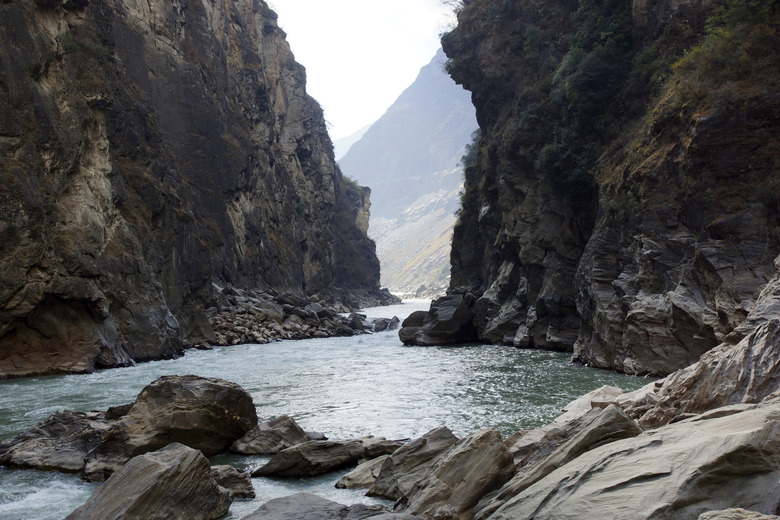How Gorges Are Formed
A gorge is a steep-sided, narrow valley with a river or stream running along the bottom. Gorges are formed by the interplay of several geological processes, including erosion, tectonic processes such as vertical uplift and cavern collapse. Erosion by the resident body of water is usually the primary contributor to gorge formation.
A River Cuts Through It
A River Cuts Through It
Rivers carve gorges as they pass over the land by carrying rocks and soil away. The continuous flow of water and abrasion by debris in the water eventually cuts a deep trench through the landscape that exposes many layers of rock. Glaciers can also dig gorges into the land as they advance and retreat. These glacial gorges fill with water and become rivers, which in turn remove more rock and soil to form even deeper gorges.
Land Motion
Land Motion
Gorge formation is accelerated by certain geological processes. Vertical uplift is when the edges of tectonic plates rise as they crash into one another to form steep, rocky features, such as mountains and gorges. When the roofs of underground caverns collapse, they can also form or deepen a gorge.
Cite This Article
MLA
Libal, Angela. "How Gorges Are Formed" sciencing.com, https://www.sciencing.com/gorges-formed-5130993/. 24 April 2017.
APA
Libal, Angela. (2017, April 24). How Gorges Are Formed. sciencing.com. Retrieved from https://www.sciencing.com/gorges-formed-5130993/
Chicago
Libal, Angela. How Gorges Are Formed last modified August 30, 2022. https://www.sciencing.com/gorges-formed-5130993/
